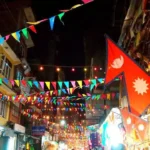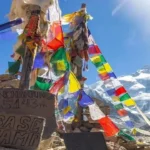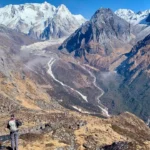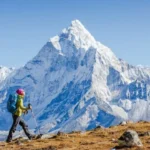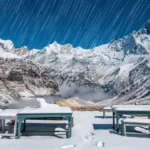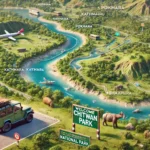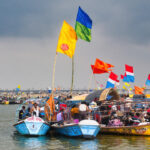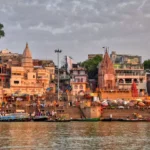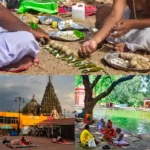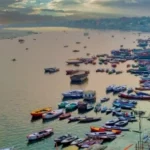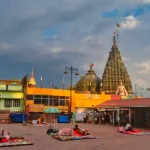Experiencing Khaptad: Top Things to Do and Attractions
Khaptad National Park offers a range of experiences centred around nature, spirituality, and adventure.
Trekking Adventures: Trails and Itineraries
Trekking is the primary way to explore Khaptad. The trails are generally moderate, involving ascents and descents through forests and meadows, but the remoteness adds to the challenge.
- Popular Route: The most common starting point is Silgadhi in the Doti district. From Silgadhi, it typically takes 2-3 days of walking to reach the park headquarters. A typical itinerary might look like this:
- Day 1: Drive/Fly to Dhangadhi, drive to Silgadhi.
- Day 2: Trek from Silgadhi to Jhigrana (approx. 5-7 hours).
- Day 3: Trek from Jhigrana to Bichpani Bugyal (approx. 6-8 hours) – entering the park buffer zone/park.
- Day 4: Trek from Bichpani Bugyal to Khaptad National Park Headquarters (approx. 4-6 hours).
- Day 5-6: Explore Khaptad (Ashram, Tribeni, Sahasralinga, Patans, viewpoints).
- Day 7: Trek back towards Jhigrana/Silgadhi or alternative exit points.
- Day 8-9: Return journey.
- Alternative Routes: Access is also possible from Chainpur (Bajhang) or other points in Achham and Bajura, though these are generally less common for tourists.
- Difficulty: Moderate. Requires good physical fitness due to sustained walking days and altitude (up to 3300m). Trails can be basic and sometimes steep.
- Duration: Allow at least 7-10 days for a fulfilling Khaptad trek, including travel time to/from the region.
Spiritual Pilgrimage: Visiting Sacred Sites
Khaptad is dotted with sites of religious and spiritual importance:
- Khaptad Baba Ashram: The hermitage where Khaptad Baba lived and meditated. It’s a simple, peaceful place offering insight into his life. Museums showcasing his belongings might be present.
- Tribeni Dham: The sacred confluence of three rivers (sources of the Budhiganga, Setiganga, and Karnali rivers, locally considered). Bathing here is considered auspicious, especially during festivals like Ganga Dashahara. A Shiva temple is located here.
- Sahasralinga: At 3,200m, this is one of the highest points in the park, offering panoramic views. It holds religious significance with naturally occurring lingam-shaped stones.
- Khaptad Daha (Lake): A serene lake nestled amidst the Patans. It’s a beautiful spot for reflection and enjoying the landscape.
- Ganesh Temple & Nag Dhunga: Other smaller temples and sacred stones are found along the trails.

Birdwatching and Wildlife Spotting
With its rich avian diversity, Khaptad is a prime destination for birdwatchers. Carry binoculars and a field guide. Early mornings are best. While larger mammals are elusive, keep an eye out for monkeys, deer, goral, and wild boar, especially in quieter forest sections or near water sources.
Nature Photography and Landscape Appreciation
The unique Patans, colourful forests (especially in spring and autumn), dramatic skies, and panoramic viewpoints provide endless opportunities for photographers. The interplay of light, mist, and the rolling landscape is particularly captivating during sunrise and sunset.
Cultural Immersion with Local Communities
The areas surrounding Khaptad National Park are inhabited by various ethnic groups, primarily Chhetri, Brahmin, and Thakuri communities. Interacting respectfully with locals in villages like Silgadhi or Jhigrana provides a glimpse into the unique culture and traditional lifestyle of Far-West Nepal. Homestays might be developing in buffer zone communities.
Planning Your Trip: Practical Information
A trip to Khaptad requires careful planning due to its remoteness.
How to Reach Khaptad National Park
Getting to Khaptad involves multiple stages:
- Fly or Drive to Regional Hubs:
- Dhangadhi Airport: The most common gateway. Regular flights connect Dhangadhi with Kathmandu. From Dhangadhi, hire a vehicle or take local buses towards Silgadhi (Doti) or other trailheads. The drive takes several hours (approx. 6-8 hours to Silgadhi).
- Nepalgunj Airport: Another option, with flights from Kathmandu. From Nepalgunj, road travel towards the park region is necessary.
- Road Travel to Trailheads:
- Silgadhi (Doti): The most popular starting point for the trek. Accessible by road from Dhangadhi.
- Chainpur (Bajhang): An alternative access point, requiring road travel, possibly via Dadeldhura or Dhangadhi.
- Local buses are available, but can be slow and crowded. Hiring a private jeep is faster but more expensive. Road conditions can be challenging, especially after the monsoon.
- Trekking In: From the chosen trailhead (e.g., Silgadhi), the trek into the park headquarters takes 2-3 days.
Accommodation and Food Options
Facilities within Khaptad National Park are basic and limited compared to more popular trekking regions.
- Inside the Park:
- Army Barracks/Guest Houses: The Nepal Army manages the park and often provides basic accommodation (dormitory-style rooms or designated camping areas) near the park headquarters. Availability can be limited, and booking in advance is difficult.
- Camping: The most reliable option. Trekkers should ideally be self-sufficient with tents, sleeping bags, and mats. Designated campsites are available.
- Outside the Park:
- Villages: Basic lodges or teahouses might be available in villages like Silgadhi, Jhigrana, or Bichpani along the trekking route. Don’t expect luxury.
- Homestays: Developing in some buffer zone communities, offering a cultural experience.
- Food:
- Inside the Park: Very limited food options. The army canteen might offer basic meals (Dal Bhat), but availability and variety are not guaranteed. It’s highly recommended to carry your food supplies (energy bars, noodles, snacks, tea/coffee) and cooking equipment if camping.
- On the Trail: Basic Dal Bhat and snacks might be available at lodges in villages en route. Purifying your water (using filters or tablets) is essential.

Permits, Fees, and Regulations
- Entry Permit: All visitors require an entry permit to Khaptad National Park.
- Nepali Citizens: Nominal fee.
- SAARC Nationals: NPR 1,500 (approx. $12-15 USD – subject to change).
- Foreign Nationals (Non-SAARC): NPR 3,000 (approx. $25-30 USD – subject to change) + 13% VAT.
- Where to Get Permits: Permits can usually be obtained at the park entrance gate (e.g., near Jhigrana) or potentially at the Department of National Parks and Wildlife Conservation (DNPWC) office in Kathmandu (check beforehand).
- Park Rules:
- Respect wildlife and maintain a distance.
- Do not disturb flora or fauna. Picking plants (especially medicinal herbs) is prohibited.
- Dispose of waste properly (Pack it in, Pack it out). Leave No Trace principles are crucial.
- Camping is allowed only in designated areas.
- Respect local culture and religious sites.
- Guides are highly recommended for safety and navigation, though not always mandatory.
(Note: Permit fees are subject to change. Always verify current rates with official sources before your trip.
The People of Khaptad: Culture and Livelihoods
The region surrounding Khaptad National Park is predominantly inhabited by Hindu communities, primarily belonging to Chhetri, Thakuri, and Brahmin castes. Their lifestyles are largely based on subsistence agriculture, animal husbandry, and traditional crafts. The local culture is rich in unique traditions, festivals (like Gaura Parba), and folk music (Deuda songs).
The establishment of the park has influenced local livelihoods, providing some opportunities in tourism (guides, porters, lodges) and conservation initiatives. However, balancing conservation goals with the traditional resource needs of local communities (like grazing rights or the collection of firewood) remains an ongoing process managed through buffer zone programs.
Conservation Challenges and Future Outlook
Khaptad National Park, despite its remoteness, faces several conservation challenges:
- Poaching: Threats exist for wildlife like the Musk Deer and the Leopard.
- Illegal Harvesting: Collection of valuable medicinal plants poses a threat to biodiversity.
- Grazing Pressure: Livestock grazing in the Patans can impact vegetation and wildlife habitats.
- Forest Fires: Accidental or intentional fires can damage forest ecosystems.
- Infrastructure Development: Balancing necessary local development with conservation needs.
- Limited Resources: Funding and staffing for effective park management and anti-poaching efforts can be constrained.

Conservation efforts focus on:
- Regular patrols by Nepal Army personnel and park staff.
- Community-based conservation programs in the buffer zone.
- Raising awareness among local communities and visitors.
- Research and monitoring of key species and habitats.
- Promoting sustainable tourism practices.
The future of Khaptad lies in strengthening these conservation measures while carefully managing tourism to ensure its ecological integrity and spiritual serenity are preserved for generations to come.
Essential Tips for a Safe and Memorable Khaptad Trek
- Pack Appropriately: Layered clothing (thermals, fleece, wind/waterproof jacket), sturdy trekking boots, warm sleeping bag (-10°C rating recommended), hat, gloves, sunscreen, sunglasses, first-aid kit, water purification method (filter/tablets), sufficient snacks, power bank, headlamp.
- Physical Fitness: Be prepared for multi-day trekking with elevation changes. Engage in cardiovascular training beforehand.
- Hire Local Guides/Porters: Highly recommended for navigation, safety, and supporting the local economy. They possess invaluable local knowledge.
- Altitude Sickness: While Khaptad’s maximum altitude (~3300m) poses a lower risk than higher treks, acclimate properly, stay hydrated, and be aware of symptoms (headache, nausea, dizziness).
- Water: Do not drink untreated water. Use purification tablets or a reliable filter. Carry sufficient water bottles.
- Communication: Mobile phone connectivity is unreliable or non-existent in most parts of the park. Inform someone of your itinerary before you leave. Satellite phones might be an option for organised groups.
- Respect Culture and Nature: Dress modestly in villages, ask before taking photos of people, and follow Leave No Trace principles strictly.
- Be Self-Sufficient: Carry essential food, medication, and gear, as facilities are minimal.
- Travel Insurance: Ensure you have comprehensive travel insurance covering trekking and emergency evacuation.
Why Khaptad National Park Should Be on Your Bucket List
Khaptad National Park offers a unique combination found nowhere else in Nepal:
- Unparalleled Tranquillity: Escape the crowds and experience true Himalayan serenity.
- Spiritual Resonance: Connect with the peaceful energy of a place sanctified by decades of meditation.
- Unique Landscapes: Witness the breathtaking beauty of the rolling Patan grasslands.
- Rich Biodiversity: Explore diverse forests and meadows teeming with flora and fauna, especially birds.
- Authentic Experience: Discover the culture and challenges of remote Far-West Nepal.
- Off-the-Beaten-Path Adventure: Embark on a rewarding trek far from commercialised routes.

Frequently Asked Questions (FAQ)
- Q1: What is Khaptad National Park famous for?
- It’s famous for its unique rolling plateau grasslands (Patans), rich biodiversity (especially birds and medicinal plants), and its deep spiritual significance linked to Khaptad Baba.
- Q2: How difficult is the Khaptad trek?
- The trek is generally considered moderate in terms of technical difficulty, but the remoteness, basic facilities, and multi-day walking require good physical fitness and preparation.
- Q3: Is Khaptad safe for solo trekkers?
- While possible, solo trekking is generally not recommended due to the remote trails, limited communication, and basic facilities. Hiring a local guide is strongly advised for safety and navigation.
- Q4: What is the best month to visit Khaptad?
- The best months are during Spring (March-May) for wildflowers and pleasant weather, and Autumn (October-November) for clear skies and excellent views.
- Q5: Are there lodges inside Khaptad National Park?
- Accommodation inside the park is very basic, primarily consisting of army barracks/guest houses with limited capacity near the headquarters, and designated campsites. It’s best to be prepared for camping or very basic lodging.









